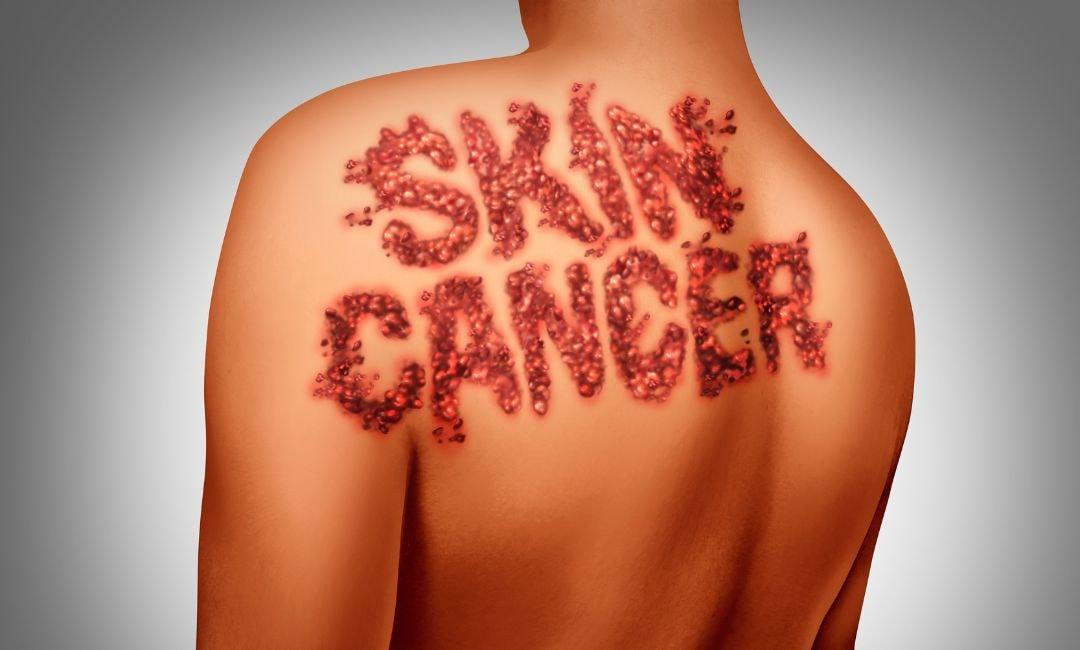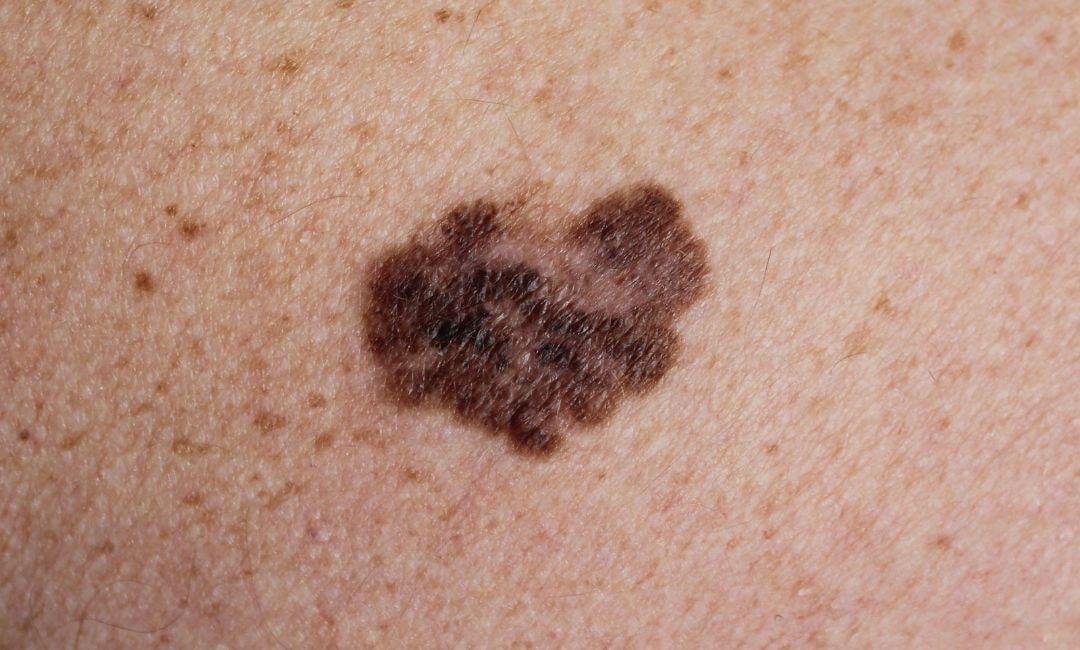What Does Skin Cancer Look Like

- posted: Oct. 08, 2024
Ever looked in the mirror and wondered, "What is that spot?" We've all been there. Knowing what to look for is the first step in protecting yourself from skin cancer.
This guide breaks down the warning signs, shows you what to watch out for, and empowers you to take control of your skin's health.
Here's what we'll cover:
The ABCDEs of Skin Cancer: Learn the simple rule that can save your life.
Different Types of Skin Cancer: We'll explore the most common forms, including basal cell carcinoma, squamous cell carcinoma, and melanoma.
Skin Cancer on Different Skin Tones: It's not just a "fair skin" problem. We'll show you how to spot it on everyone.
How to Perform a Self-Exam: Become your own first line of defense.
When to See a Dermatologist: Early detection is key.
At Natura Dermatology & Cosmetics, we're all about healthy skin. Our team of experts can help you identify and address any concerns you may have. Schedule a visit today for peace of mind.
The ABCDEs of Skin Cancer
Consider the ABCDEs your ultimate tool in the fight against skin cancer. This simple rule helps you spot suspicious moles or growths before they become a serious problem. Early detection is key to beating this disease, so let's get familiar with the signs:
A is for Asymmetry: If you draw a line down the middle of a mole and the two halves don't match, that's asymmetry. It's like how your left foot doesn't quite match your right.
B is for Border: A harmless mole usually has a smooth, even border. With skin cancer, the border might be jagged, blurry, or irregular.
C is for Color: Normal moles are typically a single shade of brown. If a mole has different colors (black, brown, tan, red, or blue) within it, that's a warning sign.
D is for Diameter: Pay attention to the size. Anything larger than 6 millimeters (about the size of a pencil eraser) warrants a closer look from a dermatologist.
E is for Evolving: This is crucial. Any change in a mole—size, shape, color, or even if it starts itching or bleeding—means it's time to see a doctor.
The ABCDEs are most helpful for identifying melanoma, the deadliest form of skin cancer. But any new or changing spot on your skin deserves a professional opinion, just to be safe.
Different Types of Skin Cancer
Skin cancer comes in different forms, each with its own quirks and characteristics. Let's get to know the most common types:
Basal Cell Carcinoma (BCC)
Basal cell skin cancer is one of the most common type of skin cancers, and thankfully, the least dangerous. BCC often appears as a pearly or waxy bump, kind of like a small, flesh-colored pimple that doesn't go away. You'll usually find basal cell carcinomas on sun-exposed areas like your face, ears, and neck.
Squamous Cell Carcinoma (SCC)
Squamous cell skin cancer is the second most common type of skin cancer. Squamous cell carcinomas often look like a scaly red patch, a sore that doesn't heal, or a wart-like growth. Like BCC, squamous cell carcinoma signs are also more common in sun-exposed areas.
Melanoma

Melanoma is less common than BCC and SCC, but it's the most serious type. Why? Because it can spread to other parts of your body if not caught early. Melanoma often starts as a change in an existing mole or appears as a new, unusual-looking mole. Remember those ABCDEs? They're especially important for spotting melanoma.
These are just the most common types. Other, rarer forms of skin cancer exist. Any time you notice something new or unusual on your skin exposed, don't hesitate to get it checked out by a dermatologist.
Skin Cancer on Different Skin Tones
Here's a common misconception: "I have dark skin, so I don't need to worry about skin cancer." Wrong. While it's true that people with fair skin have a higher risk, anyone can get skin cancer, regardless of their skin tone.
The challenge? Skin cancer can be harder to spot on darker skin tones. It's like finding a brown button on a brown carpet. But don't worry, we've got you covered.
Where to Look
In people with darker skin, skin cancer often shows up in less obvious places:
Palms of the hands and soles of the feet: Keep an eye out for dark spots or skin growths in these areas.
Under the nails: A brown or black streak under your nails could be a sign of trouble.
Mucous membranes: This includes the inside of your mouth, nose, and eyelids.
What to Look For
While the ABCDEs still apply, here are some additional things to watch out for:
Changes in existing moles: Any change in size, shape, or color warrants a visit to the dermatologist.
New spots or growths: Even if they don't fit the ABCDEs perfectly, it's better to be safe than sorry.
Sores that don't heal: This could be a sign of squamous cell carcinoma.
Dark spots or patches: These can be a sign of melanoma, especially if they're growing or changing.
Regular self-exams are crucial for everyone, but especially for those with darker skin tones. Get familiar with your skin and any existing moles so you can easily spot changes.
How to Perform a Self-Exam
Think of a self-exam as a monthly treasure hunt, but instead of gold, you're searching for anything unusual on your skin. It's easy, it's free, and it could save your life. Here's how to do it like a pro:
Grab Your Gear
All you need is a well-lit room, a full-length mirror, a hand mirror, and a bright light. Optional but helpful: a comb or hair dryer to move hair out of the way, and a body map to track your moles.
Get Started
Full Body Scan: Start by examining your entire body in the mirror. Pay close attention to areas that are exposed to the sun: face, ears, neck, chest, arms, hands, legs, and feet. Don't forget to check your back.
Up Close and Personal: Use the hand mirror to get a closer look at hard-to-see spots, like your scalp, behind your ears, and the soles of your feet.
Don't Skip the Details: Examine your nails, the palms of your hands, and between your fingers and toes.
Check Your "Privates": Don't be shy. Anywhere can develop skin cancer, so include your genitals and buttocks in your exam.
What to Look For
Remember the ABCDEs. Also, be on the lookout for:
New moles: Any new mole, regardless of size or shape, should be checked by a dermatologist.
Sores that don't heal: This is a common sign of squamous cell carcinoma.
Any changes: Even if a spot doesn't fit the ABCDEs, any change in size, shape, color, or texture warrants a professional opinion.
Performing a self-exam once a month helps you become familiar with your skin's "normal." This makes it easier to spot any changes that might occur.
At Natura Dermatology & Cosmetics, we encourage all our patients to perform regular self-exams. It's a simple yet powerful tool in the fight against skin cancer. If you have any questions or concerns about performing a self-exam, our team is here to help.
Signs You Need to See a Dermatologist
You've been doing your monthly self-exams like a champ (go you), but sometimes, you need a professional opinion. Dermatologists are the skin experts – they have the training and tools to spot subtle changes that you might miss.
Here are a few signs it's time to schedule that appointment:
You Spot Something Suspicious
This is a no-brainer. If you notice a new mole, a changing mole, or anything that just doesn't look right, don't wait. Early detection is crucial, especially for melanoma.
You Have a Family History of Skin Cancer
Genetics plays a role in skin cancer risk. If you have a family history of the disease, you're at a higher risk and should see a dermatologist regularly for checkups.
You've Had Excessive Sun Exposure
Love the beach? We get it. But all that fun in the sun comes at a cost. If you've spent a lot of time in the sun (especially without protection), you're at a higher risk for skin cancer and should get checked out.
You Have a History of Tanning Beds
Tanning beds are basically cancer boxes. If you've used them in the past, you've increased your risk of skin cancer. Regular checkups are essential.
You Have a Skin Condition That's Not Improving
Acne, eczema, psoriasis – a dermatologist can help with nearly all skin cancers. If you have a skin condition that's not responding to over-the-counter treatments, it's time to see a pro.
Even if you don't have any specific concerns, consider seeing a dermatologist for an annual skin check. It's like an oil change for your skin – a little preventative maintenance goes a long way.
At Natura Dermatology & Cosmetics, we offer comprehensive skin cancer screenings and personalized treatment plans. Our team is dedicated to helping you achieve and maintain healthy, beautiful skin. Don't hesitate to reach out and schedule an appointment today.
Skin Cancer FAQs
What are the seven warning signs of skin cancer?
While the ABCDEs of skin cancer cover the major warning signs, here are a few more to keep on your radar:
A sore that doesn't heal: This could be a sign of squamous cell carcinoma.
A new spot or growth: Any new spot, even if it doesn't fit the ABCDEs perfectly, warrants a closer look.
A spot that itches, bleeds, or oozes: These changes could indicate that a mole is becoming cancerous.
A change in skin texture: Rough, scaly patches or a persistent red, irritated area could be a sign of skin cells cancer.
A small, pearly bump: This is one of the most common basal cell carcinoma signs.
A mole with an irregular border: The edges of a cancerous mole may be notched, blurred, or ragged.
A mole that's different from the others: This is sometimes called the "ugly duckling" sign. If a mole stands out from the rest, get it checked out.
What does skin cancer look like when it first starts?
Skin cancer can be sneaky in its early stages. It might look like:
A small, shiny bump: This is often the case with basal cell carcinoma.
A red, scaly patch: This could be a sign of squamous cell carcinoma.
A change in an existing mole: Perhaps a mole becomes larger, darker, or develops an irregular border.
A new mole: Any new mole or skin lesions, regardless of its appearance, should be monitored.
How can you tell if a spot is skin cancer?
The best way to tell if a spot is skin cancer is to have it examined by a dermatologist. However, the ABCDEs are a great tool for self-assessment. If you notice any of these characteristics, it's time to schedule an appointment:
Asymmetry: The two halves of the mole don't match.
Border: The border is irregular, blurred, or notched.
Color: The mole has multiple colors or shades.
Diameter: The mole is larger than 6 millimeters (about the size of a pencil eraser).
Evolving: The mole is changing in size, shape, or color.
What can be mistaken for skin cancer?
Several benign skin conditions can mimic skin cancer, including:
Seborrheic keratoses: These are common, non-cancerous growths that often appear as brown, black, or tan growths.
Skin tags: These are small, flesh-colored growths that hang off the skin.
Moles: Most moles are harmless, but any changes should be monitored.
Warts: These are caused by a virus and are usually rough and bumpy.
Cherry angiomas: These are bright red, dome-shaped growths that are made up of tiny blood vessels.
If you're unsure whether a spot is skin cancer, it's always best to err on the side of caution and have it checked by a dermatologist.
Is skin cancer raised or flat?
Skin cancer can be either raised or flat. Basal cell carcinoma often appears as a raised, pearly bump, while squamous cell carcinoma may be flat and scaly. Melanoma can vary in appearance and may be raised, flat, or even have both raised and flat areas.
How long can you have skin cancer without knowing?
Skin cancer can develop slowly, and it's possible to have it for months or even years without noticing any symptoms. This is why regular self-exams and annual skin checks are so important. The earlier skin cancer is detected, the easier it is to treat.
How do you rule out skin cancer?
The only way to definitively rule out skin cancer is to have a suspicious spot examined by a dermatologist. They may perform a visual exam, a dermoscopy (using a special magnifying device), or a biopsy (removing a small tissue sample for analysis).
How curable is skin cancer?
The good news is that skin cancer is highly curable, especially when detected early. The cure rate for basal cell carcinoma and squamous cell carcinoma is very high when treated promptly. Melanoma can be more challenging to treat, but the chances of successful treatment are still excellent when it's caught in its early stages.
How quickly does skin cancer spread?
The speed at which skin cancer spreads depends on the type and stage of the cancer. Basal cell carcinoma and squamous cell carcinoma tend to grow slowly and rarely spread to other parts of the body. Melanoma, on the other hand, can spread quickly if not detected and treated early.
Ready to Take Charge of Your Skin's Health?
Knowledge is power when it comes to skin cancer. By knowing the warning signs, performing regular self-exams, and seeking professional help when needed, you can significantly reduce your risk.
Here are the key takeaways:
The ABCDEs: Your go-to guide for spotting suspicious moles.
Skin cancer types: Basal cell carcinoma, squamous cell carcinoma, and melanoma.
Self-exams: A monthly routine that could save your life.
Dermatologist visits: Essential for early detection and personalized care.
At Natura Dermatology & Cosmetics, we're passionate about empowering you to take control of your skin's health. Whether you need a skin cancer screening, treatment for a specific concern, or simply want to learn more about protecting your skin, our team is here to help. Schedule a visit today and let us help you achieve your healthiest skin yet.
Contact Us
Our Locations
Broward Location
800 E Broward Blvd, Ste 507
Fort Lauderdale, FL, USA
Hours of Operation
8:30 am - 12:00 pm
1:30 pm - 5:00 pm
8:30 am - 12:00 pm
1:30 pm - 5:00 pm
8:30 am - 12:00 pm
1:30 pm - 5:00 pm
8:30 am - 12:00 pm
1:30 pm - 5:00 pm
8:30 am - 12:00 pm
1:30 pm - 5:00 pm
Closed
Closed


